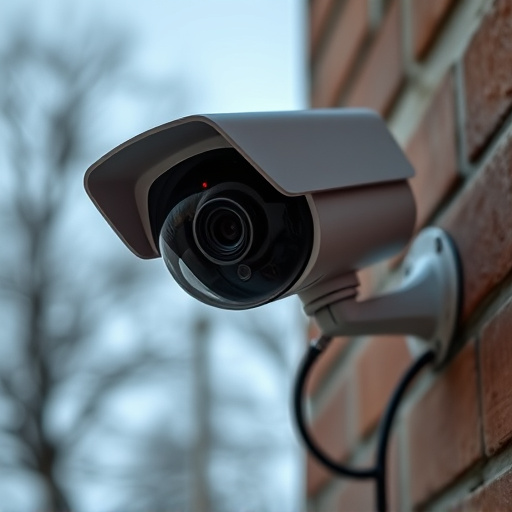Fake cameras act as powerful deterrents for neighborhood crime, tricking offenders into believing they're constantly under surveillance. Strategically placed, these realistic decoys reduce vandalism and theft by fostering a sense of heightened awareness without requiring actual security systems. However, as technology advances, it's crucial to educate residents about their limitations to maintain transparency and promote community engagement in crime prevention efforts that go beyond visual deterrents.
“Discover the power of deception in enhancing neighborhood security with fake security cameras. This article explores how these simulated devices, complete with realistic wiring, can act as powerful deterrents for potential criminals. We’ll delve into their benefits, from enhancing community surveillance to strategic placement tips.
Additionally, we’ll discuss ethical implications and future prospects, offering a comprehensive guide to understanding the role of fake cameras in crime prevention while navigating important considerations.”
- Understanding the Concept: Fake Cameras for Crime Prevention
- Benefits of Simulated Wiring in Neighborhood Surveillance
- Types and Placement Strategies for Effective Simulation
- Ethical Considerations and Future Implications of Fake Security Cameras
Understanding the Concept: Fake Cameras for Crime Prevention
Fake cameras, often referred to as simulated or decoy security cameras, have emerged as a powerful tool in neighborhood crime prevention. The concept is simple yet ingenious: by strategically placing realistic-looking fake cameras around residential areas, potential criminals are deterred from targeting these communities. These artificial eyes serve as a visible reminder of increased surveillance, making it less likely for individuals with malicious intentions to carry out their plans.
The use of fake cameras can significantly enhance the safety and security of neighborhoods. They act as a psychological barrier, discouraging vandals, thieves, and other criminals from committing acts that may go unnoticed or unpunished. With their lifelike appearances, these simulated devices mimic real surveillance equipment, tricking offenders into believing they are under constant watch. This strategic deception can contribute to a safer environment, empowering residents to feel more secure in their homes and communities.
Benefits of Simulated Wiring in Neighborhood Surveillance
The integration of fake security cameras with simulated wiring offers a subtle yet powerful tool for neighborhood crime prevention. These realistic-looking dummy cameras provide an effective deterrent to potential criminals, as they mimic the presence of active surveillance systems. By strategically placing these fake cameras around residential areas, communities can create a sense of heightened awareness and security without actually installing physical cameras. This psychological effect has been proven to reduce criminal activity, making it an attractive solution for neighborhoods looking to enhance their safety measures.
Simulated wiring adds another layer of realism, making the fake cameras even more convincing. It allows residents to benefit from the visual presence of a surveillance system without the high costs and complexities associated with traditional security setups. This innovative approach encourages a safer environment, as criminals may be less likely to target areas where they perceive increased surveillance. As a result, simulated wiring in fake security cameras contributes to a more secure neighborhood, giving residents peace of mind and empowering them to take proactive steps towards crime prevention.
Types and Placement Strategies for Effective Simulation
Fake security cameras, also known as decoy or mockup cameras, come in various types, each offering unique features for effective simulation and deterrence. The most common types include static cameras that mimic real hardware with LEDs indicating activity, and dynamic models that pan, tilt, or zoom to simulate active surveillance. For optimal placement strategies, consider high-crime areas within a neighborhood. Positioning fake cameras at entrances, alleyways, and visible spots can create the illusion of enhanced security, deterring potential criminals from targeting residential or commercial properties.
Neighborhood associations or local businesses can collaborate to install these decoy cameras as part of a community crime prevention initiative. Strategically placed simulation devices not only serve as visual deterrents but also encourage genuine security measures and better neighborhood watch practices, thereby fostering a safer environment for all residents.
Ethical Considerations and Future Implications of Fake Security Cameras
The rise of fake security cameras with simulated wiring raises several ethical considerations regarding neighborhood crime prevention efforts. While they offer an affordable deterrent to potential criminals, there’s a fine line between simulating active surveillance and misleading residents. The visual deception could lead to a false sense of security, impacting community awareness and proactive measures against crime. Ethical deployment demands transparency in their use, ensuring residents are fully informed about the limitations and non-functional nature of these devices.
Looking ahead, the implications extend to the evolving landscape of home security and neighborhood watch. As technology advances, distinguishing between authentic and fake cameras will become more challenging. This could prompt a reevaluation of local crime prevention strategies, emphasizing the importance of education, community engagement, and integrated security solutions that foster a culture of vigilance without relying solely on visual deterrents.
Fake security cameras with simulated wiring offer a unique approach to neighborhood crime prevention, providing both psychological and practical benefits. By strategically placing these realistic replicas, communities can deter potential criminals while enhancing overall surveillance. However, it’s crucial to balance the use of fake cameras with ethical considerations, ensuring transparency and avoiding any misleading information. As technology advances, further research into their effectiveness and impact on community safety is essential, potentially shaping the future of neighborhood crime prevention strategies.
